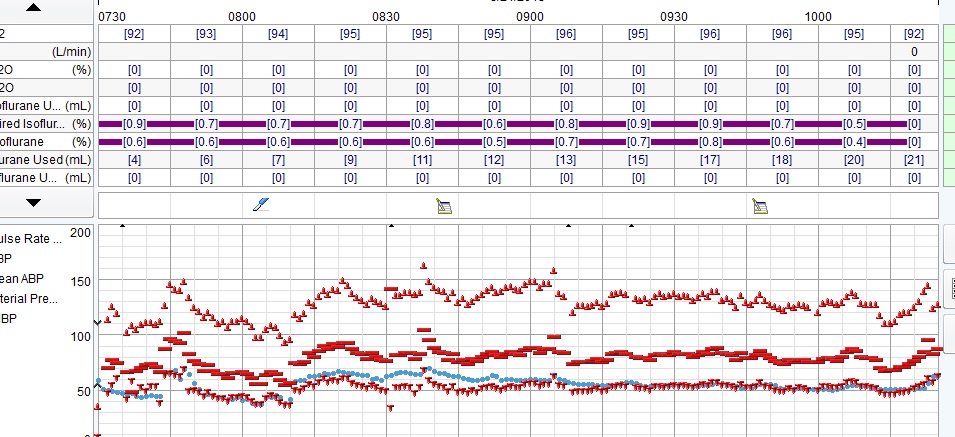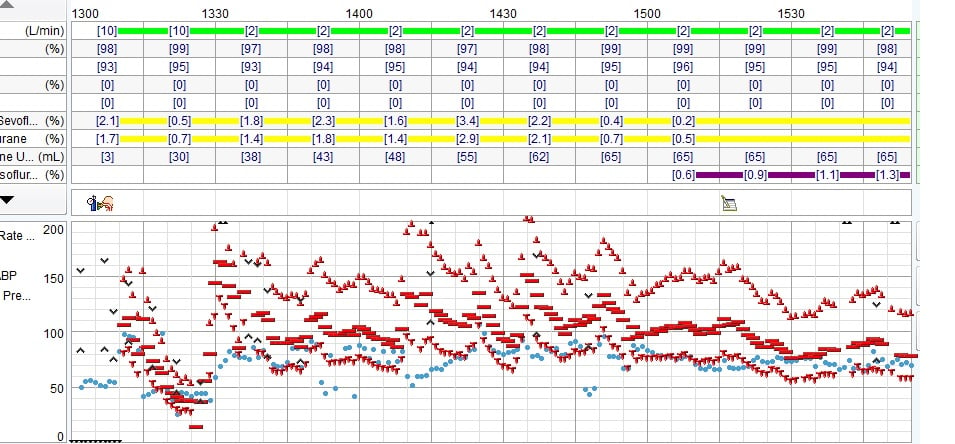CRNA skill level, you ask?
Here's the first couple hours of my recent carotid endarterectomy on a 70-some year old ASA 3 gentleman:
And here's one from the same week on a similar patient performed by a CRNA at my institution:
Has the CRNA performed enough cardiac/vascular cases on sick patients to really understand the concept of a balanced induction? Have they recently presented a keyword on incidence of CEA complications and their management, or understand why a remifentanil infusion provides excellent hemodynamic stability? Do they know (or care) that small boluses of nicardipine will serve them better than absentmindedly flipping the infusion on and off every couple minutes? Do you think even a fraction of them understand the difference between putting in a shunt versus cross-clamping solely with reliance on contralateral ICA/vertebral perfusion?
This is just one of a bazillion examples in anesthesia where a CRNA's training/skill set can't compare with a physician's...


